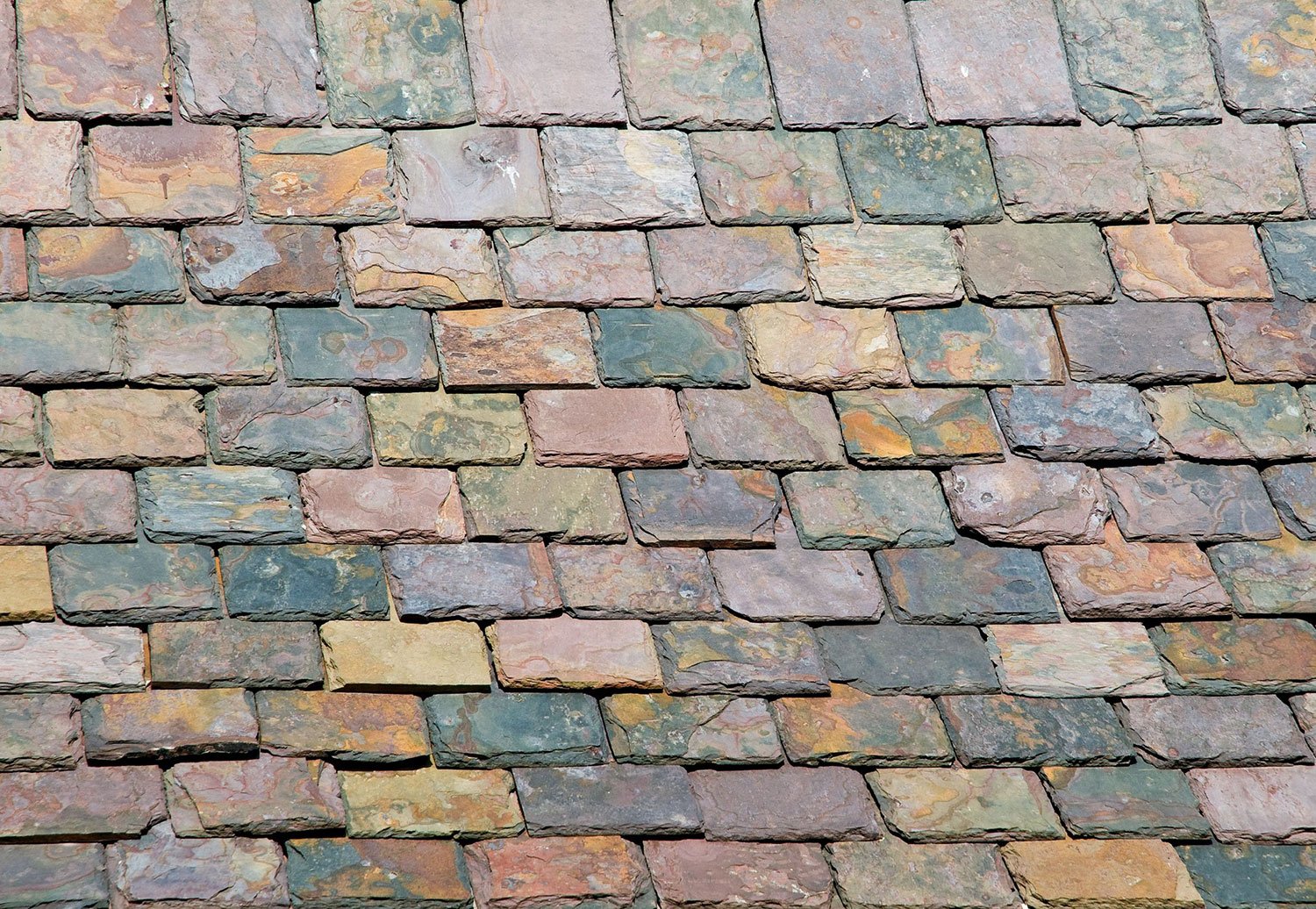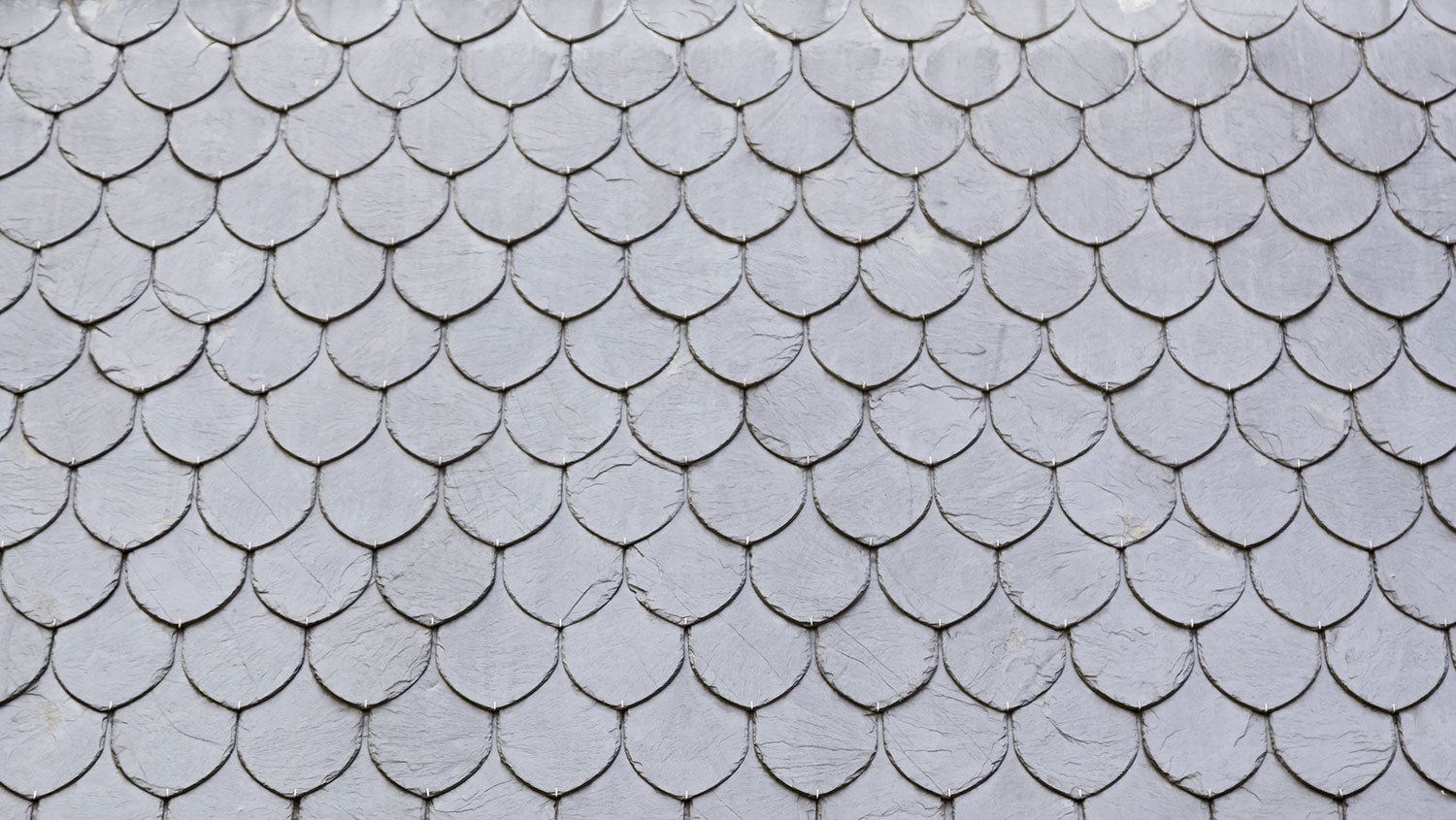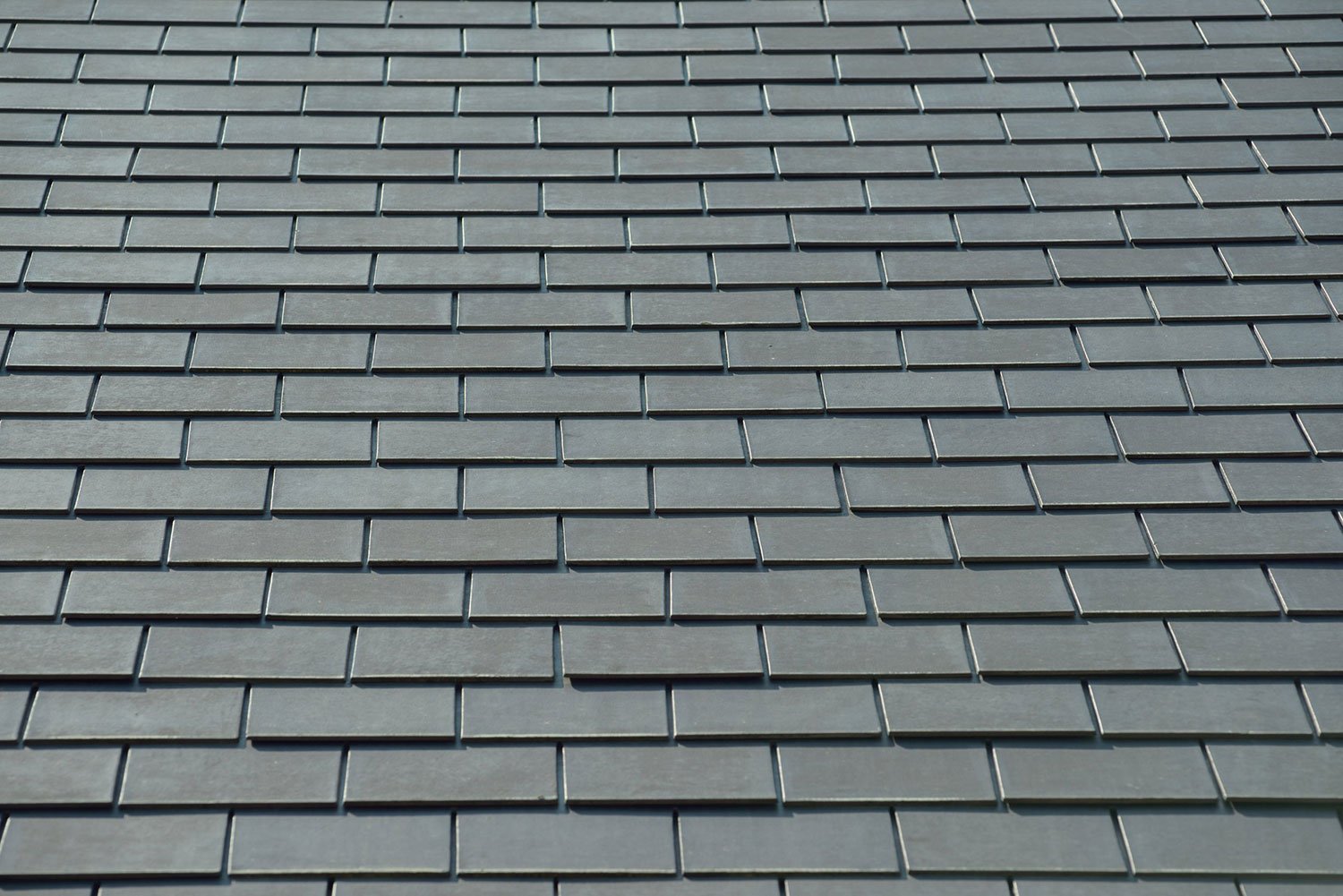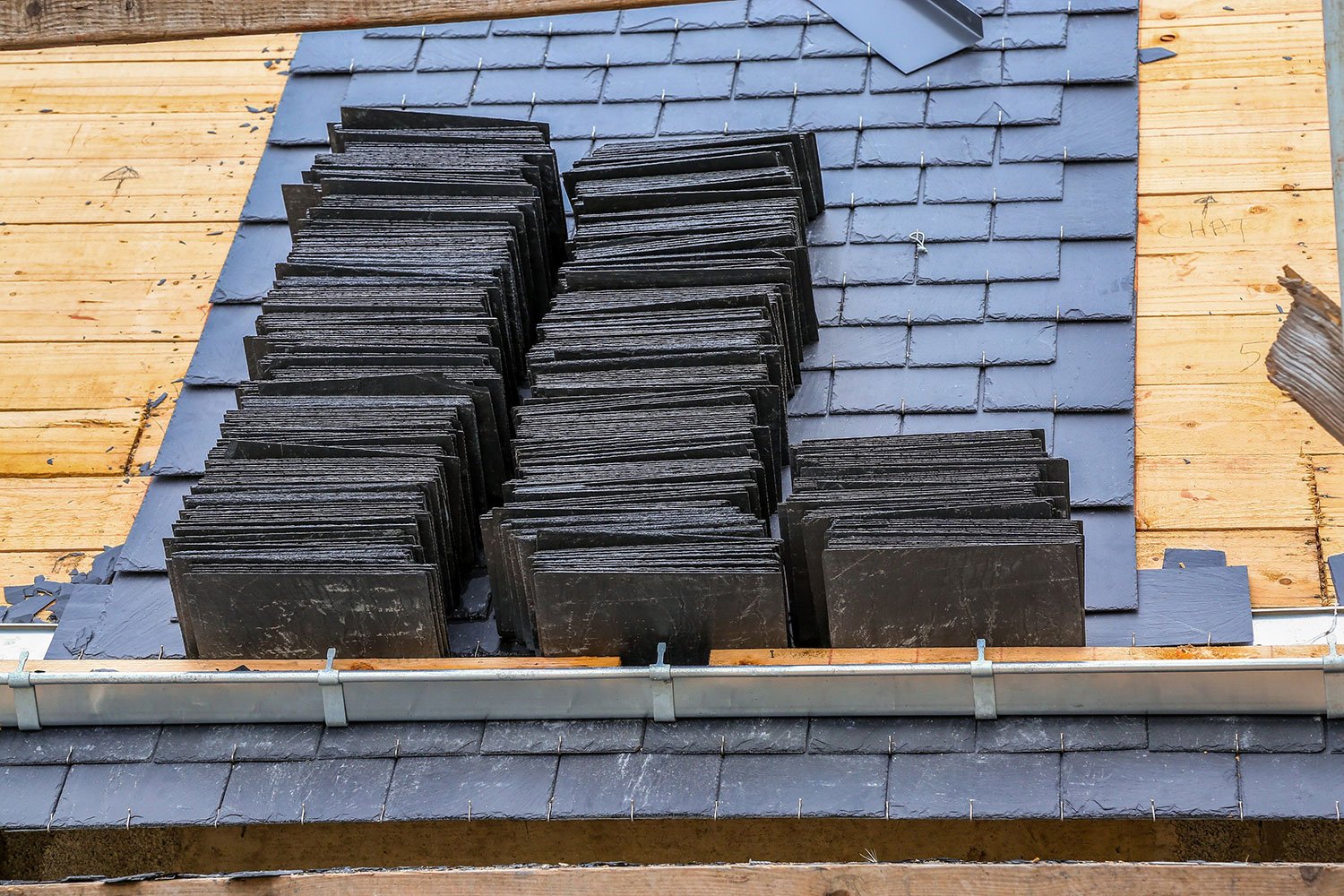Slate roofs are one of the oldest types of roofing materials still used today. Slate is an excellent material for a roof because it’s durable and aesthetically pleasing. It has stood the test of time because it’s an efficient material that can withstand many different conditions. Slate roofs have plenty of benefits and only a few drawbacks, making them a good choice for homeowners who want something that will last a long time while looking great on their home.
What are slate roofs?
Slate roofing tiles are a traditional choice for many homes, but they're not as common today. Slate is a sedimentary rock formed by layers of compressed sediments that have been exposed to intense pressure and heat over millions of years. As a result, it's much stronger and more durable than asphalt shingles. The downside is that it's more expensive to install than asphalt or other types of roofing materials.
A slate roof is made up of individual pieces called "tiles" or "slabs." These tiles are connected together using nails or screws; this makes them easier to move around on the roof when repairs need to be done.

Why Slate Tiles Make Good Roofing Material
Why you need slate roofing and its benefits:
It's the longest-lasting option. Slate roofs can last for centuries. It’s estimated that an 80-year-old Welsh slate roof can be expected to last another 100 years or more, whereas a standard asphalt shingle roof would have to be replaced after 25 years, on average. The longevity of a slate roof also depends on your climate, but if you live in an area where freezing temperatures are rare and rainfall isn't excessive, you should expect that your slate tiles will last longer than those of any other type of material available today.
It's the most environmentally friendly option. Slate is one of the most environmentally friendly building materials available today because it requires very little energy to produce and has been used for centuries with no damage done to the environment during production or installation processes (a process known as "cladding"). Slate slabs are typically mined from quarries where they've been naturally preserved underground for hundreds or even thousands of years before being extracted from their natural state through mining techniques such as blasting or tunneling into rock formations using dynamite charges fired remotely by handheld detonators operated by someone standing at some distance away from where explosives are being detonated so as reduce risk factor involved when working with explosives).

Slate Roofs vs. Asphalt Shingles
Slate roofs are a popular choice for many homeowners because of the many benefits they offer. These include:
- Durability. Slate is known for its durability and can last for decades without any major issues. Asphalt shingles, on the other hand, tend to wear out more quickly with age and may need to be replaced sooner than you might think.
- Environmental friendliness. Slate shingle roofing materials do not contain chemicals that are harmful to our environment, unlike asphalt shingles that require petroleum-based products during manufacturing and installation (and sometimes beyond). This means that if you choose slate over asphalt shingles, it will help protect the environment while also saving money on energy bills over time! There's also no need for harmful chemicals like formaldehyde since slate doesn't contain those substances.
- Asphalt shingle roofing is America's most popular roofing type, but slate roofs offer many benefits that make them a great choice for homeowners.

Different Types and Grades of Slate
In addition to the cost, it's important to consider the quality of the slate you purchase. While many properties have a natural slate roof, some may have been installed with artificial slates or even asphalt tiles. The type of roofing material used on your property is an important factor in determining its value and can affect how much money you’re able to get when selling it.
There are three grades of slate:
- Soft Slates: These are usually split into two different types: Soft Water Slates (or Soft Brown), and Hard Water Slates (or Hard Brown). Soft water slates are generally slightly softer than hard water slates but both will have varying qualities.
- Medium Density Slates: These are generally made from a higher quality stone than soft density slates, but not as high quality as hard density ones which tend to be more expensive because they last longer than their lower grade counterparts!
- Hard Density Slates: These are the highest quality slates you can buy and will last the longest, making them a great choice for homeowners who want to ensure their roofing investment lasts for many years to come.
The price of slate also varies depending on the type of slate. For example, Welsh slate is typically more expensive than Chinese slate. However, each type of slate offers different benefits, so it's important to weigh all your options before making a final decision.
The Benefits of Natural and Artificial Slate
- Natural slates are more expensive than artificial ones, but they last longer and are more environmentally friendly. Natural slate is made from slate stone, which is a type of metamorphic rock that can be found in various locations around the world. When exposed to high heat or pressure, this rock changes its composition into a new material called phyllite (a type of soft slate). This kind of stone is then cut into sheets and formed into roofing tiles using a series of processes that involve heating and compressing it with steam. If you're looking for something that will last for years without breaking down, natural slates are your best bet. These materials typically don't degrade easily even under extreme weather conditions like heavy rain or snowfall.
- Synthetic slate roofs or Artificial slates are cheaper than natural ones but don't last as long or have as much value over time due to their lower quality materials used during the manufacturing process such as fiberglass instead fiberglass insulation during the installation process which means less money saved since you'll need more re-roofing jobs done sooner rather than later due increased cost per square foot rate increases each year due rising costs associated with labor force shortages caused by decreasing birth rates worldwide combined with increasing demand due aging population demographics worldwide causing shortage demand ratio too high so prices go up drastically over time making business profits less profitable
How long does a slate roof last?
As stated previously, slate roofs have a long lifespan. They’re known to last for centuries. They are very durable and can withstand harsh weather conditions like rain or snowfall. Since these roofs require little maintenance, you won’t have to worry about them wearing out in the course of time. Slate has been used since ancient times for roofing purposes because it lasts so long—and it will last for hundreds of years more if properly installed in your home today!
How much does a slate roof cost?
The cost should be offset by how long they last, but Slate roofs are costly to install.
The cost of labor and materials varies depending on the size of your roof and whether or not you choose natural or artificial slate. Natural slates tend to be more expensive than artificial ones because they require more preparation in order to get them ready for installation on your home's roof structure.
Importance of Underlayment in the Longevity of a Slate Roof
The underlayment of a slate roof is vital to the longevity and integrity of your roof. The underlayment is a waterproofing membrane that protects your roof from water damage. It’s important to have a high-quality underlayment installed to avoid leaks! Most quality slate roofs use synthetic materials such as asphalt or rubber.
Why Roofing Contractors like Slate Roof Shingles
Slate roofs are one of the most popular choices for roofing contractors because they’re so durable and long-lasting. They also add a touch of class and sophistication to any home.
When you have a well-installed slate roof on your home, you can be sure that it will increase the value of your property. This is because slate shingles are a sign of quality craftsmanship. If you ever decide to sell your home, potential buyers will be willing to pay more for a house with a slate roof than one that doesn’t have one.
A slate shingle roof is a great investment for your home, and it will provide you with many years of protection against the elements. Be sure to hire a reputable roofing contractor to install your slate roof, and you’ll be sure to enjoy its beauty and benefits for years to come!
 Slate Roof Installation
Slate Roof Installation
Now that you know all about slate roofs, it’s time to find a roofing contractor who can install one on your home. Be sure to do your research and find a reputable contractor with experience in installing slate roofs. This way, you can be sure that your roof will be installed correctly and will last for many years to come!
If you’re looking for a high-quality roof that will last for centuries, install slate roofing. This natural material is one of the most durable roofing materials on the market and slate roofs. This type of roof is not something you want to DIY! The installation process of a slate roof is very labor-intensive, so it’s essential to hire a professional roofing contractor who has experience with this type of roof.
While a new slate roof is costly to install, it last much longer than an asphalt roof—up to 200 years! This makes slate roofs a wise investment for your home. Not only will you save money in the long run, but you’ll also increase the value of your property.
Slate Roof Maintenance
Once your slate roof is installed, there’s not much you need to do in terms of maintenance. These roofs are very low-maintenance and don’t require much care. Slate roofs are also fireproof and resistant to rot, so you can rest assured knowing that your roof is well-protected.
To ensure that your slate roof lasts for centuries, it’s important to have a high-quality underlayment installed. This waterproofing membrane protects your roof from water damage and leaks. Most quality slate roofs use synthetic materials such as asphalt or rubber for their underlayments.
If you take care of your slate roof tiles, they will take care of you!
Conclusion
Slate roofs have several advantages. They are sturdy, environmentally friendly, and very long-lasting. The average lifespan of a slate roof is 50 years or more; however, some can last for many centuries. In addition to their longevity, they are also very cost-effective in the long run, because they require little maintenance or repair work over time.
Another advantage of slate roofs is that they come in a variety of colors - including black and gray - which means that you can choose the right color for your home’s exterior design.
If you’re interested in getting one installed on your home or office building, please contact us today so we can help answer any questions you may have or get started with an estimate!

COMMENTS